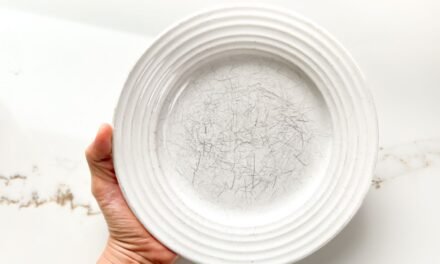Keeping your home stocked with essential items is a continuous endeavor that can significantly enhance your living experience. This guide will delve into the various categories of products that need regular updating—from spices to cookware and cleaning supplies. Let’s explore what should stay fresh and how to maintain a well-stocked home.
1. Spice Blends and Dried Ingredients
1.1 The Longevity of Spices
Spices are the soul of any kitchen. While whole spices like ginger, peppercorns, and cinnamon sticks can maintain their potency for three years or more, ground spices and delicate herbs tend to lose their flavor much quicker, often within a year.
1.2 Best Practices for Storage
To keep your spices fresh, it’s advisable to purchase them in smaller quantities unless you use them frequently. In our kitchen, staples like chili powder, granulated garlic, and lemon pepper are consumed rapidly, so we buy these in bulk.
2. Baking Powder and Baking Soda
2.1 Shelf Life and Storage Tips
Baking powder and baking soda are crucial leavening agents in baking. Stored properly in airtight containers, they can last for about two years. However, once opened, their potency can diminish within six weeks. Keep them in a cool, dark place—like your pantry—to ensure longevity.
3. Flour Varieties
3.1 Understanding Expiration Dates
Flours have different shelf lives, so it’s essential to pay attention to their expiration dates, especially if you’re transferring them to different storage containers.
3.2 Types of Flour and Their Durability
- White Flour: All-purpose, bread, and cake flours can typically last for one year in your pantry or up to two years in the refrigerator or freezer.
- Whole Grain Flours: Whole wheat and seed flours have a shorter shelf life, lasting about three to six months at room temperature but can be stored in the fridge for up to a year.
4. Nuts and Seeds
4.1 Importance of Proper Storage
Nuts and seeds are rich in nutrients but can go rancid quickly if not stored correctly. For best results, keep them in the refrigerator or freezer to extend their shelf life.
4.2 Recognizing Rancidity
Check for off flavors before using nuts in your recipes, as a few spoiled nuts can ruin a dish. Generally, nuts can last about a month in the kitchen and extend to two years in the refrigerator.
5. Rice and Pasta
5.1 Differentiating Shelf Lives
Like flours, different types of rice and pasta have varying shelf lives. Brown rice and whole grain pasta tend to spoil quicker than their white counterparts.
5.2 Best Practices for Storage
If you notice an off smell, it’s usually best to discard them. Meanwhile, white rice can last for years when stored properly in airtight containers.
6. Toiletries and Dish Cloths
6.1 When to Replace Dish Cloths
Dish cloths can become worn and stale over time. If a good soak in OxiClean doesn’t restore them, it might be time to buy new ones. Regular replacement can help maintain hygiene in the kitchen.
7. Teflon Skillets
7.1 Lifespan and Maintenance
While cast iron and stainless-steel cookware can last a lifetime with proper care, Teflon skillets usually have a shorter lifespan. Even with careful use, they can lose their non-stick qualities in two to three years.
7.2 Choosing Wisely
I usually keep a couple of nonstick skillets on hand but opt for mid-range brands since I know they’ll eventually need replacing.
8. Rubber and Nylon Utensils
8.1 Durability Concerns
Silicone and nylon utensils aren’t as sturdy as their wooden or metal counterparts. Even with the utmost care, they can become stained or nicked.
9. Kitchen Sponge
9.1 Replacement Frequency
I replace my kitchen sponges every two weeks. They can harbor bacteria if not replaced regularly, making them a critical item in your cleaning arsenal.
10. Seasonal Pantry Check
10.1 Importance of Regular Checks
Every season, take some time to go through your pantry and kitchen supplies. This ensures that you’re using items before they spoil and making room for new essentials.
11. Expanding Your Pantry Knowledge
11.1 Beyond the Basics
Understanding the nuances of different pantry items can help you make informed choices about what to stock and when to replace them.
12. Sustainable Practices in Stocking Your Home
12.1 Minimizing Waste
Aim to buy only what you’ll use to reduce waste. Bulk buying is great, but ensure you can consume items before they spoil.
13. Cleaning Supplies
13.1 Essential Cleaning Products
Just like food items, cleaning supplies also have a shelf life. Regularly check your cleaning products to ensure they’re still effective.
14. Personal Care Items
14.1 Toiletries that Expire
Don’t forget about toiletries like shampoo, conditioner, and body wash. Regularly check expiration dates to ensure they’re safe and effective.
15. Conclusion: Keeping Your Home Stocked and Fresh
Maintaining a well-stocked home requires diligence, but the benefits are numerous. By regularly checking your pantry, kitchenware, and cleaning supplies, you ensure that your living space remains both functional and pleasant.





